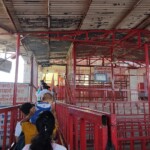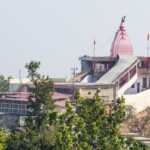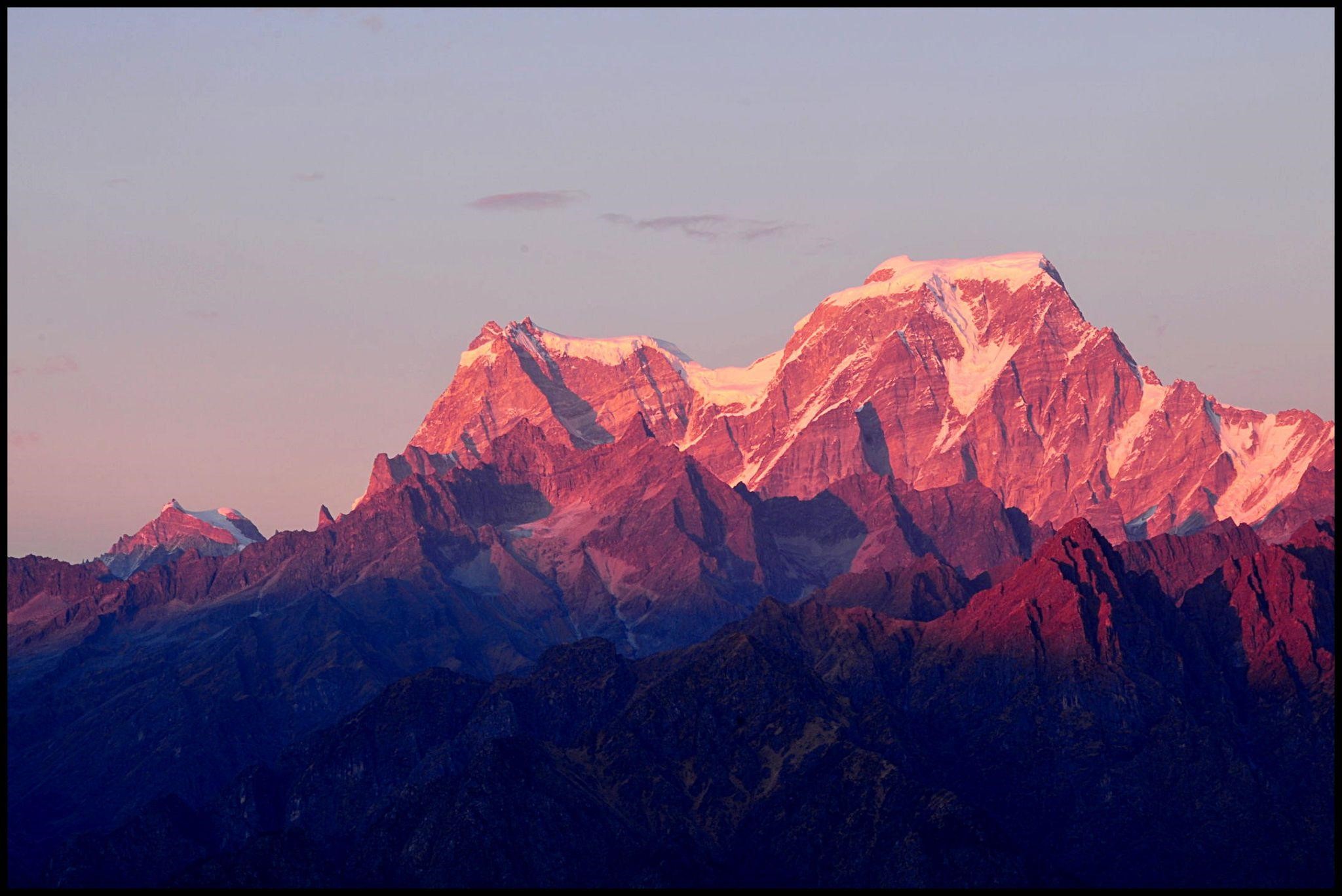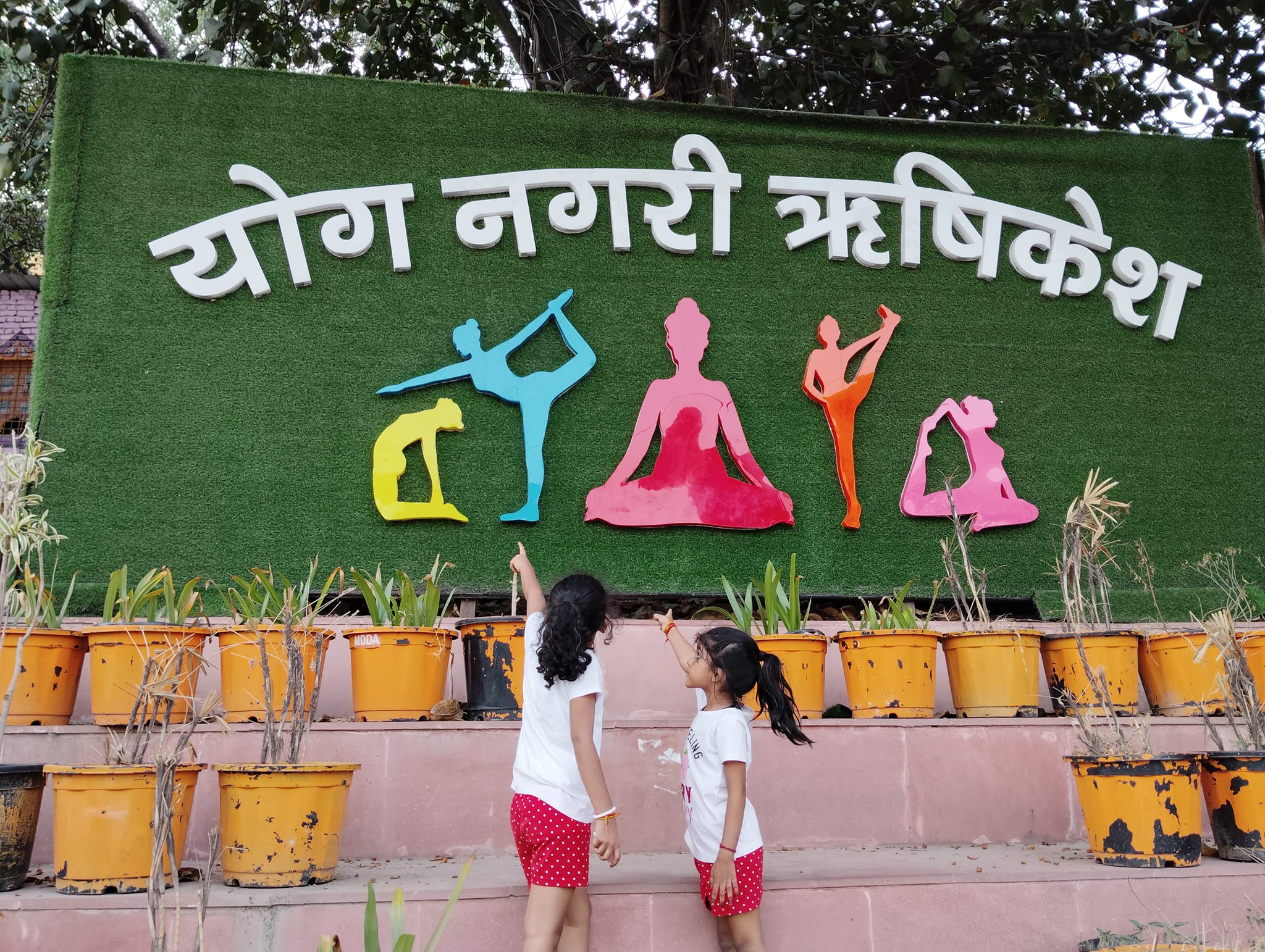
Perched atop Neel Parvat, the Chandi Devi Temple stands as a prominent attraction in Haridwar, drawing both tourists and devout pilgrims. It holds significant religious importance in this town and is located approximately 3 km from Chandighat. This revered shrine is recognized as one of the Shakti peethas and is dedicated to Goddess Chandi. The primary temple sits majestically atop the hill peak.
Chandi Devi Temple in Haridwar is among the most renowned temples in India. Its religious significance is profound, as it is counted as one of the Shakti peethas in North India. Referred to as a Siddh peetha, it is believed to possess the power to grant the wishes of its devoted visitors. This Hindu temple is devoted to Goddess Chandi Devi and is perched on the Neel Parvat, which is the eastern summit of the Sivalik Hills, the southernmost range of the Himalayas.
According to mythology, it is said that Goddess Chandika Devi rested briefly on Neel Parvat after defeating the demon kings, Shumbh and Nishumbh. The temple, known as Chandi Devi Temple, was constructed in 1929 under the patronage of Suchat Singh, the reigning king of Kashmir. Nevertheless, the main idol of Chandi Devi in the temple is believed to have been installed in the 8th century by the revered Adi Shankaracharya, a prominent Hindu priest.
This sacred site is also known as Neel Parvat Teerth and is one of the Panch Tirths (Five Pilgrimages) located within Haridwar. Like many temples in India, Chandi Devi Temple has its own legend. According to Hindu mythology, the kingdom ruled by Lord Indra was threatened by two demon kings, Shumbh and Nishumbh, who sought to expel the gods from heaven. In response, a powerful goddess, Chandika Devi, was created from the essence of goddess Parvati. When the demon king Shumbh tried to marry her, he was met with fierce resistance, leading to a monumental battle.
Chandika Devi first vanquished Chand Munda, the demon’s army chief, and then slew the demon kings Shumbh and Nishumbh. This epic battle unfolded on the Neel Parvat, which is why the temple serves as a commemoration of that pivotal event. The Chandi Devi Temple, situated atop Neel Parvat, is not only a renowned place of worship but also a symbol of historical and spiritual significance. It commemorates the divine victory of Chandika Devi and continues to attract devotees and visitors from all corners of the country.
Chandi Devi Temple Haridwar Timings
| Day | Timing |
| Monday | 5 AM – 7 PM |
| Tuesday | 5 AM – 7 PM |
| Wednesday | 5 AM – 7 PM |
| Thursday | 5 AM – 7 PM |
| Friday | 5 AM – 7 PM |
| Saturday | 5 AM – 7 PM |
| Sunday | 5 AM – 7 PM |
Glory of Chandi Devi Temple
The Chandi Devi Temple in Haridwar, India, holds significant religious and cultural importance, and its glory lies in several aspects:
Religious Significance: The temple is dedicated to Goddess Chandi, a form of the goddess Parvati. It is considered one of the Shakti Peethas, making it a revered place for worship and pilgrimage. Devotees visit the temple to seek the blessings of the goddess and fulfil their wishes.
Mythological Importance: The temple’s glory is associated with the legend of Goddess Chandi, who is believed to have rested on Neel Parvat after defeating the demon kings Shumbh and Nishumbh. The temple serves as a commemoration of this significant mythological event.
Spiritual Experience: The temple is located atop Neel Parvat, providing a serene and spiritually uplifting environment. The scenic beauty and the panoramic views of Haridwar, the Ganges River, and the surrounding Himalayan foothills enhance the spiritual experience for pilgrims and visitors.
Historical Significance: The temple was constructed in 1929 by King Suchat Singh of Kashmir. It is believed to house an idol that dates back to the 8th century, said to have been installed by Adi Shankaracharya, a revered Hindu philosopher and theologian.
Pilgrimage Destination: Chandi Devi Temple is one of the Panch Tirth (Five Pilgrimages) in Haridwar, making it an integral part of the city’s religious and cultural landscape. Pilgrims visit this temple as part of their spiritual journey in Haridwar.
Aarti and Rituals: Daily aarti ceremonies are performed at the temple, which are attended by devotees. These rituals add to the temple’s glory and create a devotional atmosphere that enhances the religious experience.
Accessibility: The temple can be reached by a cable car ride, which adds to the adventure and charm of the pilgrimage. The cable car ride offers stunning views of the surrounding landscape.
Tourist Attraction: Apart from its religious significance, the temple is also a major tourist attraction in Haridwar due to its unique location, architecture, and historical background.
The Chandi Devi Temple’s glory is a blend of spirituality, mythology, history, and natural beauty. It is not only a place of worship but also a symbol of cultural heritage and a site where devotees and tourists can connect with the divine and appreciate the wonders of nature.
Image Gallery of Shri Maa Chandi Devi Temple, Haridwar
Legend Story of Chandi Devi
The legend of Chandi Devi is deeply rooted in Hindu mythology and revolves around the creation and triumph of the goddess Chandi. The story is often associated with the Chandi Devi Temple in Haridwar, India.
Here is a summary of the legend:
The Battle of Chandi Devi:
- The Rise of Demon Kings Shumbh and Nishumbh: In ancient times, two powerful demon kings, Shumbh and Nishumbh, gained control over the heavens and cast out the gods from their celestial abode. They sought to conquer the entire universe, and their tyranny and arrogance knew no bounds.
- Creation of Goddess Chandi: Faced with the growing menace of Shumbh and Nishumbh, the gods were in despair. In response to their prayers, a divine light emerged from the combined energies of various goddesses, including Parvati, Durga, and Kali. This light took the form of a beautiful and fierce goddess known as Chandi Devi, a manifestation of the supreme feminine power or Shakti.
- Battle Between Chandi Devi and the Demon Kings: A fierce and epic battle ensued between Chandi Devi and the demon kings and their forces. Chandi Devi’s power and determination were unmatched. She ultimately defeated Shumbh, Nishumbh, and their army, restoring the heavens to the gods and ridding the world of the tyrannical demon rule.
- Rest on Neel Parvat: After her victorious battle, Goddess Chandi Devi is believed to have rested for a short while on Neel Parvat, a hill in Haridwar. This hill is located in the Sivalik Hills, the southernmost range of the Himalayas.
Construction of Chandi Devi Temple: The Chandi Devi Temple was constructed on Neel Parvat in 1929 by King Suchat Singh of Kashmir. It serves as a symbol of reverence to Goddess Chandi and a place of worship and pilgrimage. The temple is a testimony to the glory of the goddess and the epic battle that took place on Neel Parvat.
The legend of Chandi Devi signifies the victory of good over evil and the power of the divine feminine energy. The temple in Haridwar is a place where devotees gather to seek the blessings of Goddess Chandi Devi and pay homage to her for her valor and her role in restoring balance and righteousness in the world.
Things to do in chandi Devi Temple
Visiting the Chandi Devi Temple in Haridwar offers a spiritual and cultural experience.
Here are some things you can do when you visit the temple:
- Worship and Darshan: The primary purpose of your visit to Chandi Devi Temple is to offer your prayers and seek the blessings of Goddess Chandi. Participate in the temple rituals and have darshan (a view or glimpse of the deity) to pay your respects.
- Attend Aarti: Witness the daily aarti ceremonies that take place at the temple. The morning and evening aartis are special events where lamps are lit, prayers are offered, and devotional songs are sung. It’s a spiritually enriching experience.
- Enjoy the Scenic Views: The temple is situated on Neel Parvat, offering breathtaking panoramic views of Haridwar, the Ganges River, and the surrounding Himalayan foothills. Take some time to soak in the natural beauty and capture the picturesque landscape.
- Explore the Temple Complex: Walk around the temple complex and admire its architecture and design. The temple has a distinctive northern Indian temple style, and the surroundings are serene and well-maintained.
- Cable Car Ride: Reach the temple by taking a cable car ride from Chandighat. The cable car ride itself is an exciting and scenic adventure that provides an aerial view of the terrain.
- Hiking: If you prefer a more physical and adventurous approach, you can choose to hike up to the temple from Chandighat. The path to the temple involves a trek uphill through a forested area.
- Photography: The temple and its surroundings offer excellent opportunities for photography. Capture the temple’s beauty, the landscapes, and the cultural elements.
- Visit Other Nearby Temples: While in the area, you can explore other nearby temples and shrines in Haridwar, such as Mansa Devi Temple, which is another important pilgrimage site.
- Learn About the History and Legend: Familiarize yourself with the history and legend of Chandi Devi, which adds depth to your visit. Understanding the significance of the temple enriches your experience.
- Participate in Devotional Activities: If you’re a devout follower, consider participating in special pujas and offerings at the temple. These activities allow you to express your devotion and seek blessings for specific wishes.
- Observe Local Culture: Haridwar is known for its cultural and religious diversity. While visiting Chandi Devi Temple, you can observe the local customs, traditions, and practices that are an integral part of the pilgrimage experience.
- Enjoy Peace and Tranquility: Take a moment to sit in the temple complex and enjoy the serenity and tranquility. It’s an excellent place for meditation and self-reflection.
When visiting Chandi Devi Temple, it’s essential to be respectful of the religious and cultural practices observed by the devotees. Additionally, be mindful of the temple’s rules and regulations to ensure a smooth and meaningful visit.
Architecture and View of Chandi Devi Mandir
The Chandi Devi Temple in Haridwar is known for its unique architecture and stunning views of the surrounding landscape.
Here’s an overview of the temple’s architecture and the views you can expect:
Architecture:
The Chandi Devi Temple features a distinctive North Indian temple architectural style. Some key architectural elements of the temple include:
- Temple Complex: The temple complex is designed to be both aesthetically pleasing and spiritually significant. It is surrounded by a well-maintained courtyard and garden.
- Main Temple Structure: The main temple building is relatively small but exudes a sense of grandeur. It typically has a pyramidal or shikara-style roof, which is a common feature in North Indian temples. The exterior of the temple is often adorned with intricate carvings and sculptures.
- Colorful Decorations: The temple is usually painted in vibrant colors, which contribute to its visual appeal. The use of bright colors is a common feature in many Hindu temples and adds to the festive atmosphere.
- Inner Sanctum: The inner sanctum of the temple houses the idol of Goddess Chandi. It is a place of great reverence for devotees who come to seek the blessings of the goddess.
- Courtyard and Surroundings: The temple complex is often surrounded by lush greenery and gardens, creating a peaceful and serene environment for visitors.
View:
The Chandi Devi Temple’s location on Neel Parvat offers some of the most breathtaking panoramic views in Haridwar:
- Ganges River: You can see the holy Ganges River winding its way through the city of Haridwar and the surrounding landscape.
- Haridwar City: The temple provides a bird’s-eye view of Haridwar, showcasing the bustling city, its ghats (riverbanks), and the vibrant street life.
- Himalayan Foothills: The temple is located in the foothills of the Himalayas, and you can enjoy spectacular views of these majestic mountains, making it an excellent spot for nature enthusiasts and photographers.
- Sunset and Sunrise: The temple is an excellent place to witness mesmerizing sunrises and sunsets. The changing hues of the sky and the reflection in the Ganges River create a magical atmosphere.
- Peaceful Ambiance: Apart from the natural beauty, the serene and tranquil atmosphere atop Neel Parvat adds to the charm of the temple. Visitors often find a sense of peace and spiritual connection while taking in the views.
The combination of the temple’s unique architecture and the stunning views of the Ganges River, the city of Haridwar, and the Himalayan foothills makes Chandi Devi Temple a must-visit destination for both religious pilgrims and tourists seeking a blend of culture, spirituality, and natural beauty.
Trek to Chandi Temple
Trekking to Chandi Devi Temple in Haridwar is a popular and adventurous way to reach this sacred shrine. The trek takes you through a forested path and offers a unique experience.
Here are the steps to undertake the trek to Chandi Devi Temple:
- Reach Haridwar: To begin your trek to Chandi Devi Temple, you first need to reach Haridwar. Haridwar is well-connected by road and rail from major cities in India.
- Base Point: The trek starts from Chandighat, which is the base point for the pilgrimage. You can reach Chandighat by road or by taking a rickshaw or taxi from Haridwar.
- Trekking Path: From Chandighat, you’ll follow a well-marked trekking path that leads to Chandi Devi Temple. The path winds its way up through a forested area, providing a shaded and scenic route.
- Distance and Difficulty: The trek is approximately 3 kilometers long and is considered a moderately easy trek. It’s suitable for people of various fitness levels. However, be prepared for some uphill sections and a few steep climbs.
- Time Required: Depending on your pace, the trek can take around 1 to 1.5 hours to complete. It’s advisable to start early in the morning to avoid the midday heat, especially during the summer months.
- Provisions: Carry some water and snacks with you, as there may not be many refreshment options along the way. Wear comfortable trekking shoes, and dress appropriately, considering the weather conditions.
- Safety and Precautions: Be cautious of monkeys and other wildlife that you may encounter on the path. Keep a safe distance and avoid feeding them. Also, ensure that you don’t litter and maintain the cleanliness of the trekking route.
- Photography: The trek offers opportunities for photography, with scenic views of the surrounding landscape and the Ganges River.
- Enjoy the Journey: As you trek, take in the natural beauty, the sounds of the forest, and the fresh air. It’s not just about reaching the destination but also about enjoying the journey.
- Visit the Temple: Once you reach Chandi Devi Temple, take your time to offer your prayers, participate in the temple rituals, and explore the temple complex. The view from the temple is rewarding and offers a sense of accomplishment after the trek.
- Return: After your visit to the temple, you can choose to return by trekking down the same path or by taking the cable car back to Chandighat for a different perspective on your way down.
Trekking to Chandi Devi Temple is a memorable experience, providing a sense of adventure and connection with nature. It’s a great way to pay your respects to the goddess and enjoy the natural beauty of the area.
Chandi Devi Temple Ropeway
The Chandi Devi Temple Ropeway, also known as the Chandi Devi Udankhatola, is a popular means of reaching the Chandi Devi Temple in Haridwar, Uttarakhand, India. The ropeway provides a convenient and scenic way for pilgrims and tourists to access the temple located on Neel Parvat.
Here’s what you need to know about the Chandi Devi Temple Ropeway:
- Location: The ropeway starts from the base station, known as the Chandi Devi Ropeway Base Terminal, and goes up to the hill where the Chandi Devi Temple is situated.
- Convenience: The ropeway offers a convenient and time-saving mode of transportation to the temple, especially for those who may have difficulty climbing the steep hill on foot.
- Scenic Views: During the cable car ride, you can enjoy stunning panoramic views of the city of Haridwar, the Ganges River, and the surrounding Himalayan foothills. The views make the journey a memorable experience in itself.
- Round-Trip: The ropeway provides a round-trip service, so you can take it to reach the temple and then use it to return to the base station.
- Timing: The ropeway operates during specific hours, and the timings can vary depending on the season and weather conditions. It’s advisable to check with the local authorities or the ropeway operator for the most up-to-date timing information.
- Tickets: You’ll need to purchase tickets for the ropeway ride. The cost of the ticket may vary based on age and other factors.
- Safety: The ropeway is generally considered safe, and it adheres to safety standards. Trained operators are responsible for its operation, ensuring the safety of passengers.
- Accessibility: The ropeway is an accessible mode of transport for people of different age groups and physical abilities. It’s especially helpful for senior citizens, children, and those with mobility challenges.
- Religious Significance: While the ropeway is a convenient mode of transportation, the temple visit itself is a significant religious and spiritual experience. After reaching the temple, you can participate in the temple rituals and offer your prayers.
- Cultural Experience: The ropeway adds to the overall cultural and religious experience of visiting the Chandi Devi Temple, allowing you to enjoy the scenic beauty and the tranquil environment.
The Chandi Devi Temple Ropeway offers a modern and comfortable way to access the temple while also providing a scenic adventure. It’s an excellent option for those looking to combine the convenience of the ropeway with the spiritual experience of visiting the temple.
Chandi Devi Mandir Ropeway Price
Pricing details for the Chandi Devi Temple Ropeway (Udan Khatola) in Haridwar. These prices are subject to change, so it’s advisable to verify the current rates and any updates with the local authorities or the ropeway operator before planning your visit.
| Ticket | Price |
| Chandi Devi Ropeway | ₹ 95 |
| Chandi Devi and Mansa Devi combined | ₹ 263 |
| Concession ticket (for Chandi Devi only) | ₹ 65 |
| Concession ticket (for combined) | ₹ 122 |
Here’s a summary of the pricing for the Chandi Devi Temple Ropeway as of the information you provided:
-
Chandi Devi Rope-way: ₹ 95
-
Chandi Devi and Mansa Devi combined: ₹ 263
-
Concession ticket (for Chandi Devi only): ₹ 65
-
Concession ticket (for combined): ₹ 122
Please note the following additional details:
- All tickets are inclusive of the return journey.
- The combined ticket is valid for three days, allowing you to visit both Chandi Devi and Mansa Devi Temples during that period.
- Children below the height of 110 cm do not require tickets and can ride for free.
- Concessional tickets are available for specially-abled individuals and the widows of Indian Defense soldiers. Proof of eligibility for these concessions should be presented at the ticket counter.
These pricing details can help you plan your visit to Chandi Devi Temple and the surrounding area conveniently.
Places to Visit near Chandi Devi Temple
Chandi Devi Temple in Haridwar is located in a picturesque area with several other attractions nearby.
Here are some places you can visit in the vicinity of Chandi Devi Temple:
Mansa Devi Temple:

The Mansa Devi Temple is situated on a hill opposite Chandi Devi Temple. Like Chandi Devi, it is accessible by cable car or on foot. The temple is dedicated to Goddess Mansa Devi and offers panoramic views of Haridwar.
Har Ki Pauri:

One of the most sacred ghats in Haridwar, Har Ki Pauri is a must-visit. It’s a place of religious significance where the Ganges River is believed to leave the mountains and enter the plains. Witness the Ganga Aarti in the evening for a mesmerizing experience.
Maya Devi Temple:
This ancient temple dedicated to Goddess Maya is one of the Siddh Peethas in Haridwar. It’s an important pilgrimage site and a place of historical and cultural significance.
Daksha Mahadev Temple:
Located a short distance from Chandi Devi Temple, this temple is dedicated to Lord Shiva. It has an interesting history and is surrounded by lush greenery.
Gau Ghat:
This ghat is known for its significance in Hindu mythology and is believed to be the spot where Lord Krishna grazed the cows. It’s a peaceful and scenic place to visit.
Bhimgoda Tank:
This historic tank is located near Har Ki Pauri and is associated with the story of Bhima, one of the Pandava brothers from the Mahabharata. The tank is fed by a perennial stream and is a tranquil spot for a leisurely visit.
Chilla Wildlife Sanctuary:
Located a little further away from Haridwar, this sanctuary is home to diverse wildlife and offers opportunities for nature enthusiasts to explore the flora and fauna of the region.
Rajaji National Park:
If you’re a wildlife enthusiast, consider visiting Rajaji National Park, which is known for its diverse wildlife, including elephants, tigers, leopards, and various bird species. It’s a bit farther from Haridwar but worth the trip.
Neel Dhara Pakshi Vihar:
This is a bird sanctuary located near the Chandi Devi Temple. It’s a great place for birdwatching and enjoying the natural beauty of the area.
Sapt Rishi Ashram:
This is an ancient ashram that has been mentioned in Hindu scriptures. It’s a serene place to visit and offers a glimpse into the spiritual heritage of Haridwar.
These attractions provide a well-rounded experience for visitors, combining spirituality, natural beauty, and cultural exploration in and around Haridwar.
How to Reach Chandi devi Temple
Chandi Devi Temple is located in Haridwar, Uttarakhand, India, and is easily accessible by various means of transportation.
Here’s how you can reach Chandi Devi Temple:
By Air:
- The nearest airport to Haridwar is the Jolly Grant Airport, which is approximately 37 kilometres away from the city. You can take a domestic flight to this airport from major Indian cities like Delhi, Mumbai, and Dehradun.
- From the airport, you can hire a taxi or take a bus to reach Haridwar.
By Train:
- Haridwar has a well-connected railway station, and it’s a major railway junction in North India. Several trains from different parts of India pass through or terminate at Haridwar.
- Once you arrive at Haridwar Railway Station, you can hire a taxi, auto-rickshaw, or take a local bus to reach Chandighat, the base point for the Chandi Devi Temple.
By Road:
- Haridwar is well-connected by a network of national and state highways. You can reach Haridwar by road from major cities in North India, including Delhi (approximately 230 kilometres away), Dehradun, and other neighbouring towns.
- State-run and private buses operate regular services to Haridwar from various cities and towns. You can also opt for self-driven or rental cars.
Trekking:
- If you prefer an adventurous trek to the Chandi Devi Temple, you can start the trek from Chandighat. The trekking path is well-marked and takes you through a forested area to reach the temple on Neel Parvat. The trek is approximately 3 kilometers and takes about 1 to 1.5 hours to complete.
Chandi Devi Temple Ropeway:
- An alternative to trekking is taking the Chandi Devi Temple Ropeway (Udan Khatola) from Chandighat. It offers a convenient and scenic way to reach the temple on Neel Parvat. The ropeway operates during specific hours and has a separate ticket cost.
Upon reaching the base point at Chandighat, whether by road, train, or other means, you can choose to either trek to the temple, take the ropeway, or hire a local taxi or rickshaw to reach the temple’s entrance. The trek and the ropeway provide unique experiences, each with its own charm. Enjoy the scenic beauty and the spiritual ambiance as you make your way to Chandi Devi Temple.
Location Map for Shri Maa Chandi Devi Temple, Haridwar
FAQs about Chandi Devi Temple
What is the significance of Chandi Devi Temple?
Chandi Devi Temple is a revered Hindu shrine dedicated to Goddess Chandi. It holds great religious importance and is considered one of the Shakti peethas of North India.
How do I reach Chandi Devi Temple?
Visitors can reach the temple by either trekking the steep uphill path or using the Chandi Devi Cable Car, also known as the Chandi Devi Udankhatola, which provides a convenient and scenic ride to the temple.
What is the best time to visit Chandi Devi Temple?
The temple can be visited throughout the year, but the best time to visit is during the months of September to March when the weather is more pleasant. Avoid the monsoon season (July to September) due to heavy rainfall.
Is there an entry fee to visit the temple?
Yes, there is a nominal entry fee to visit Chandi Devi Temple. The fee varies for Indian and foreign tourists.
What are the temple's opening hours?
The temple typically opens at 05:00 AM and closes at 07:00 PM. The exact opening and closing times may vary, so it's a good idea to check the current schedule before your visit
Can non-Hindus visit Chandi Devi Temple?
Yes, non-Hindus are allowed to visit Chandi Devi Temple and explore its premises. The temple is open to people of all faiths and backgrounds.
Are there any specific dress code requirements for visitors?
While there is no strict dress code, it is advisable to dress modestly and respectfully when visiting the temple, covering shoulders and legs. Removing your shoes before entering the temple is also customary.
What are the nearby attractions to Chandi Devi Temple?
Some nearby attractions include Mansa Devi Temple, Har Ki Pauri, and the bustling markets of Haridwar. You can also explore the natural beauty of the Sivalik Hills.
Can I take photos inside the temple?
Photography regulations may vary, so it's best to check with the temple authorities or signs posted at the temple entrance regarding photography and videography permissions.









